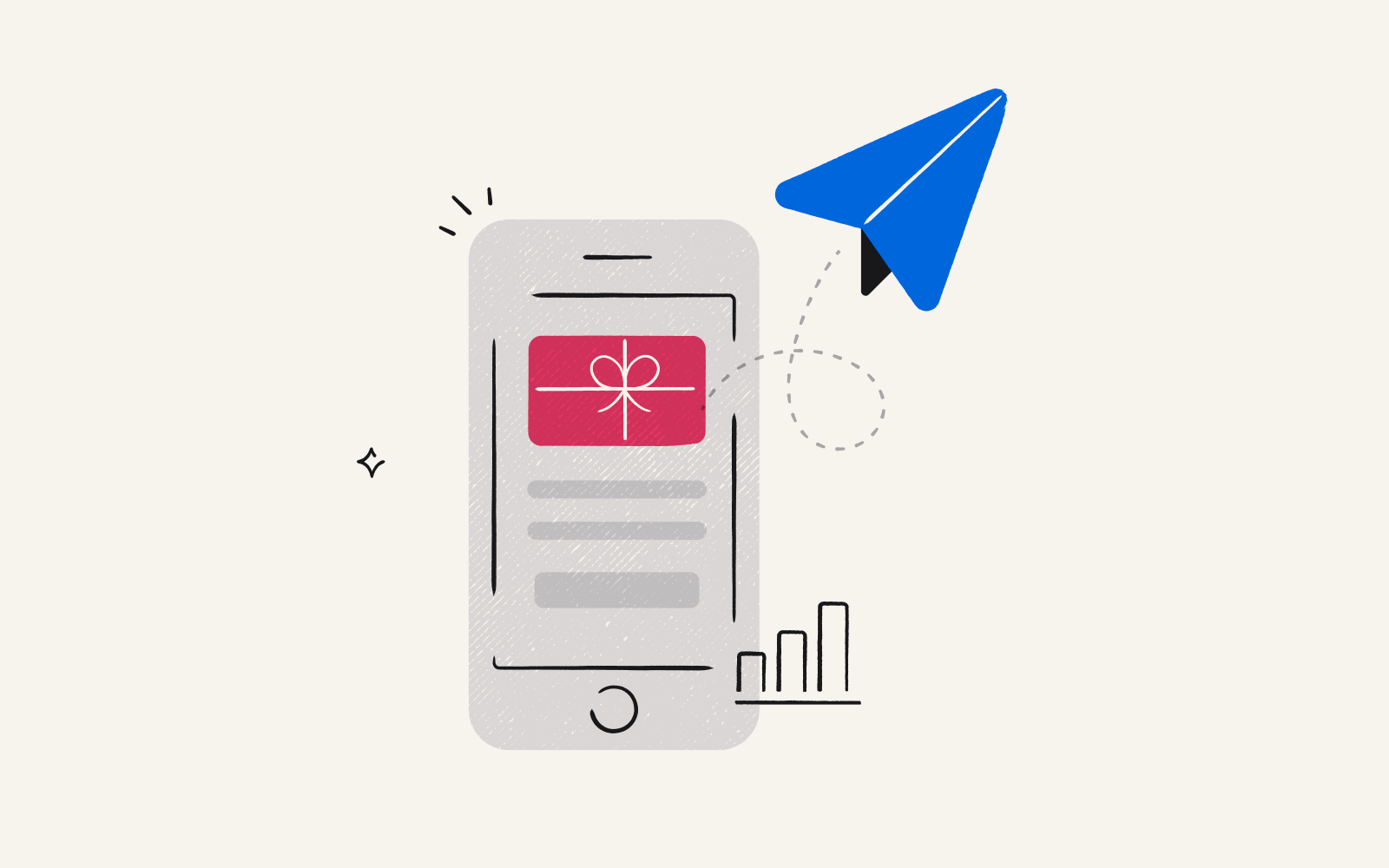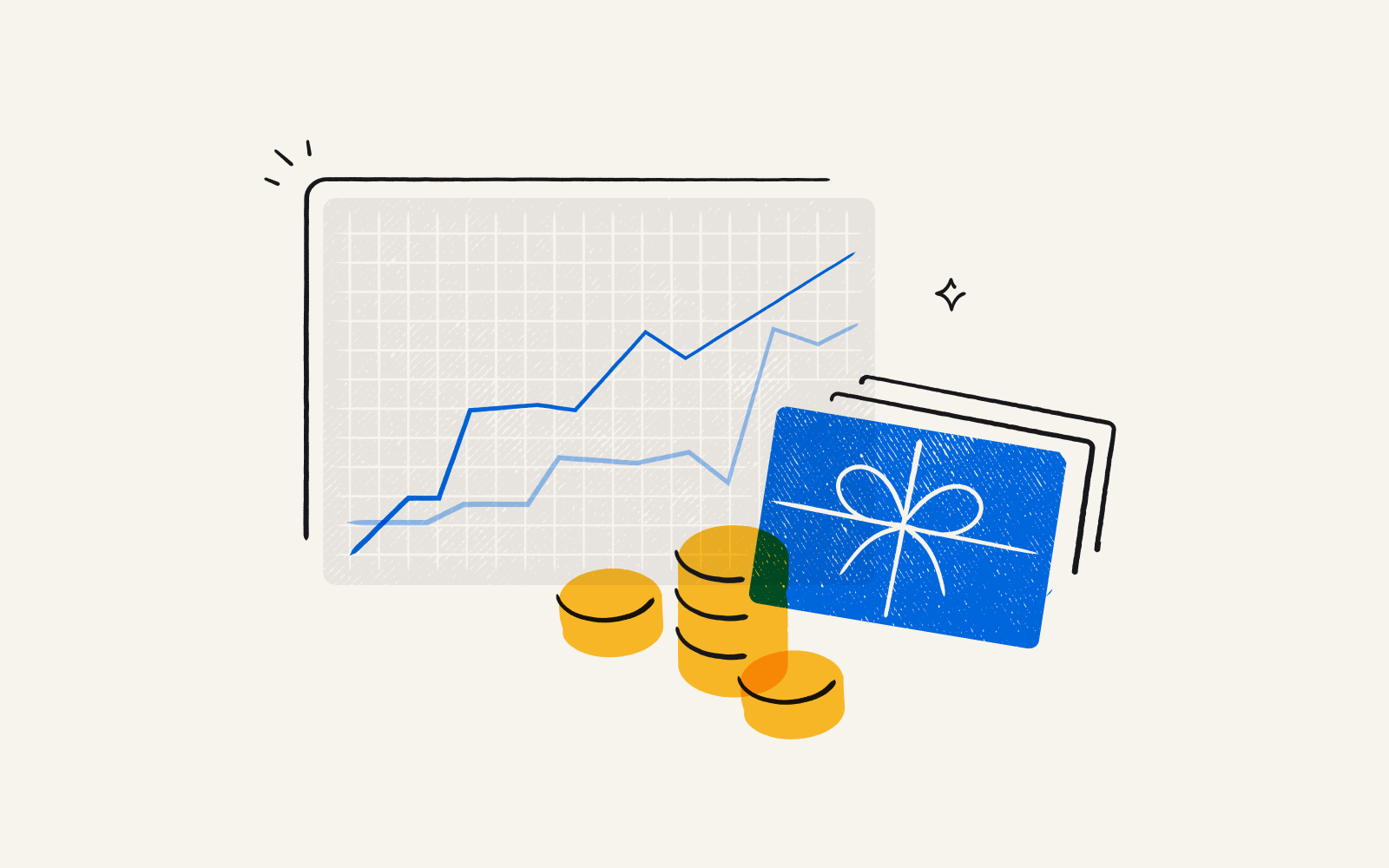What is referral marketing & why customer referrals are more important than you think
By Aaron Small|6 min read|Updated Oct 2, 2023
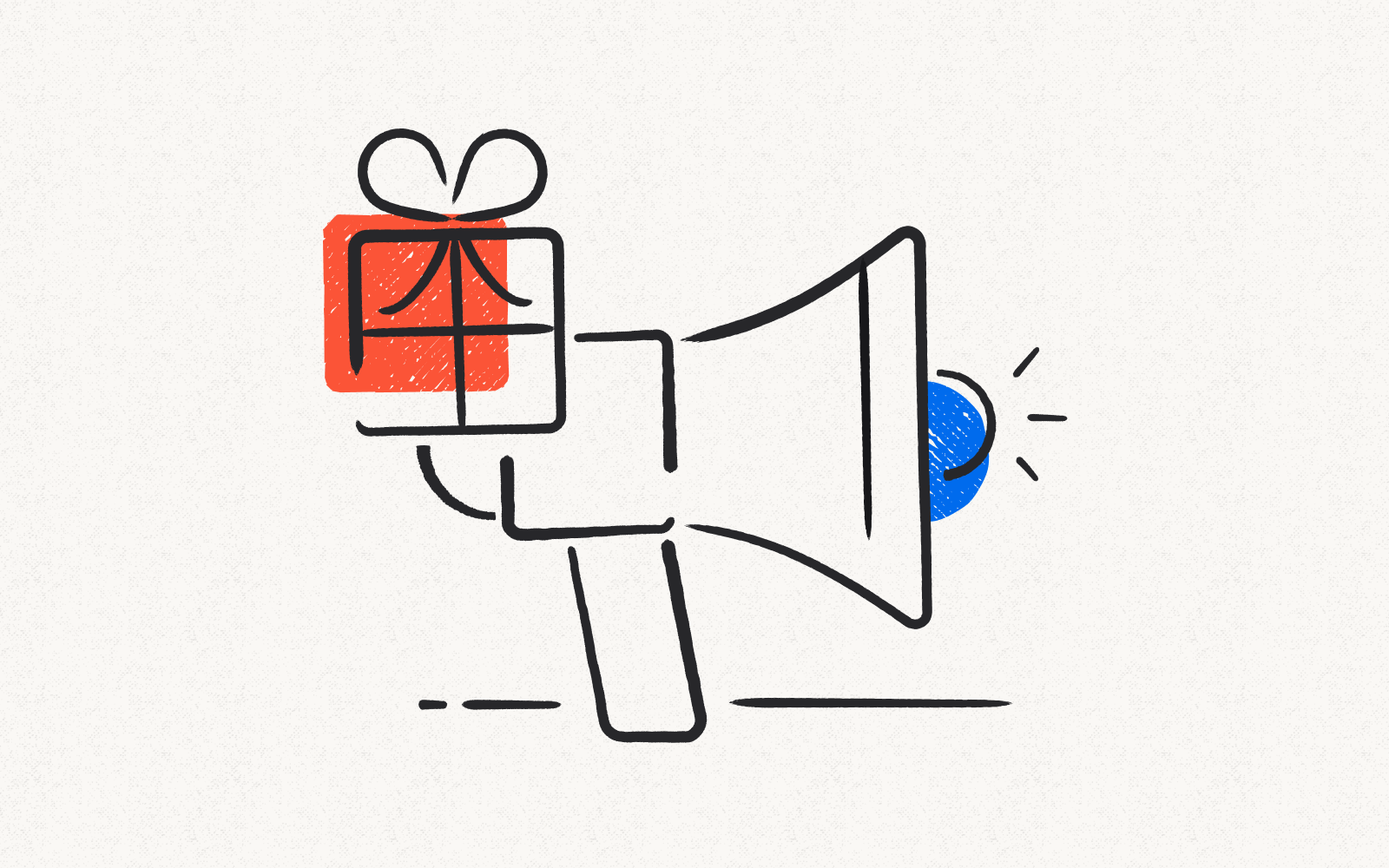
When a close friend or family member goes out of their way and refers a new product or service to us, we pay attention. A leading study published by Wharton shows that just by being referred, we’re more likely to buy from that company and stay loyal. (Van den Bulte, C. et al., 2018)
In a world bombarded with marketing messages, we trust people’s opinions more than any other medium.
For brands looking to acquire more customers and build loyalty, a referral program must be part of your growth strategy. By tapping into the power of trust and added incentives, you can reach new customers and accelerate growth for your bottom line.
But questions spring to mind:
What makes referral strategies so effective?
What types of rewards should you use as incentives?
Who gets paid?
What’s the ROI?
This guide explores the science and strategies of referral reward systems and the advantages and disadvantages of referral marketing.
What is a customer referral program?
A customer referral program is an acquisition effort centered on incentivizing current customers to recommend your product, service, or brand to their friends, families, coworkers, or anyone else in their network.
With a customer referral program, everyone wins. The customer who refers a friend gets a small reward or payout from your company, you get a new (especially loyal) user, and the new customer gets an introduction to something valuable from a person they trust.
The incentive you send to customers could be anything from a discount to a gift card. And it needs to be delivered swiftly, in a format that’s easy to redeem.
What are the benefits of a customer referral program?
There are several advantages to customer referral programs over other acquisition strategies. Specifically, referred customers are cheaper to acquire, they deliver greater long-term value, and they’re more likely to actually make a purchase than customers acquired through other means.
Referred customers are less expensive: The customer acquisition cost (CAC) associated with referred customers is considerably lower than CAC for customers won through paid channels, like LinkedIn ads, Google search ads, and Facebook ads. The average cost of a new customer earned through paid media for a SaaS company, for example, stands at a whopping $135. Meanwhile, you can win over a referred customer with as little as a $20 Visa prepaid card.
They have a higher lifetime value (LTV): Referred customers deliver considerably more value in the long-term than non-referred customers. According to one extensive study by the Wharton School of Business, referred customers tout a 16% higher lifetime value compared to customers earned through other channels.
Referred customers are a lot more likely to make purchases: Getting customers signed up for your product or service is only half the battle, as many businesses know. Encouraging customers to actually start using your product, spending, and making repeat purchases is an entirely different challenge. Fortunately, referred customers are 200% more likely to spend than non-referred customers.
Referred customers are cheaper to acquire, more valuable in the long-term, and more likely to spend. And they also build trust on both sides.
Consumers are easier to acquire through referrals
The nonstop barrage of paid media leads most people to tune out to traditional advertising.
Instead, customers vastly prefer to make buying decisions based on the valued opinions of those in their inner circle, like friends and family.
According to Nielsen’s 2012 report, 92% of consumers around the world say they trust earned media, such as recommendations from friends and family, above all other forms of advertising.
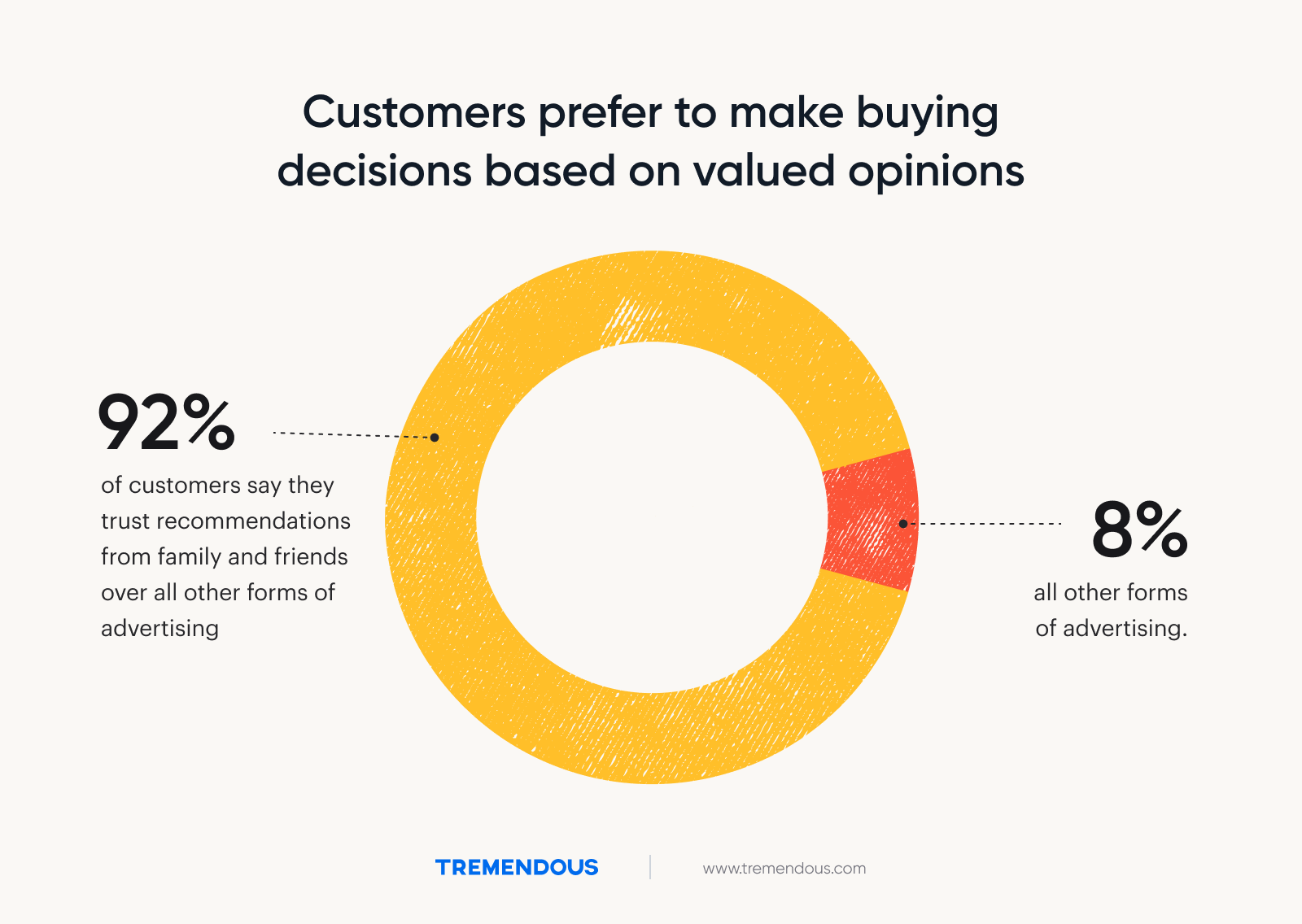
Throwing incentives into the mix helps streamline the process, creating a referral reward program, or RRP.
Learn How Casper’s Referral Program Drove 7x Its Marketing ROI
Referral marketing is cheaper
Paid media works fast but eats up budgets. Referral programs are significantly cheaper, relying on your existing customer base to do the heavy lifting via word-of-mouth.
Customer referral programs are one of the most effective ways to acquire new customers at low cost.
Higher ROI from referred customers over non-referred ones
Casper has seen massive success with their referral program — generating 7x higher returns than their average marketing investment. Tempo, selling at-home gym equipment, lowered customer acquisition costs while generating impressive new customers with their program.
And the campaign mechanics you need to get the ball rolling are quite simple: a landing page, referral codes, and some social share buttons.
So simple, and yet the added value can’t be overlooked. There are numerous studies indicating the high ROI of referred customers over non-referred ones.
“Word-of-mouth customers contribute nearly twice as much long-term value to a firm's overall customer equity.” (Villanueva, et. al (2008). In terms of actual numbers, let’s look at Schmitt’s 2011 study of a referral program run by a German bank.
“The value of referred customers in the six years after acquisition was 16% higher than that of non-referred customers with similar demographics and time of acquisition.”
With an initial reward incentive cost of only 25 euros, this implied an ROI of 60% over six years.
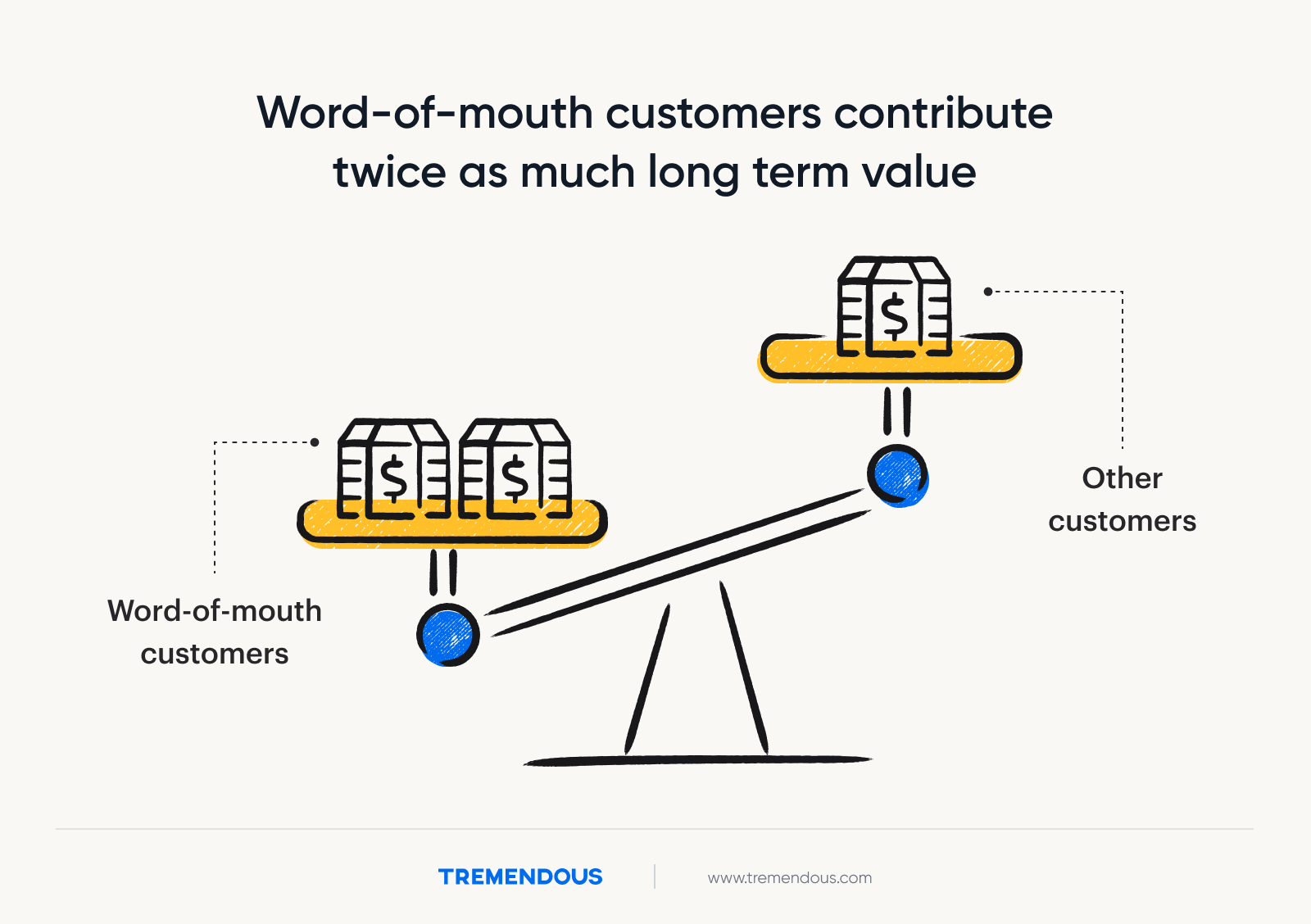
When it comes to devoting marketing resources, putting in the effort to set up a smart referral program pays dividends.
More loyalty on both sides
Customer loyalty is a feeling generated by a string of positive experiences and high-quality products delivered over time. New referrals arrive on the loyalty fast track because they’ve been selected by your current satisfied customers as a natural match for your company.
Say you’re a rock climber obsessed with your new climbing pants. You get a branded email to refer a friend and earn a discount.
What do you do? You reach out to your close climbing partners and spread the word. Maybe you meet in person or in their DMs to discuss stretchability, durability, and colors – and share your referral link.
Customer bonding is nice. And it’s great for your bottom line.
“The co-presence of a fellow customer may also provide functional benefits. A referred customer expectedly exhibits higher sales or lower cost to serve and greater satisfaction than a non-referred customer.” (Van den Bulte et al., 2018)
What are the risks of referral programs?
Before we celebrate, studies point out that the referral process is risky for senders.
‘Metaperception’ is a concept that comes into play here.
In this case, when people refer a service to a friend, they deeply care how they come across to that friend. They don’t want to be seen as greedy or taking advantage of others.
A 2013 study about a rewards program run by a bank showed that:
Metaperception is the strongest and most significant driver of successful RRP participation, followed by the reward.
Credibility can be increased by design. It’s wise to provide an easy way for customers to forward the referral message, and add links to social platforms or other online sources so newcomers can learn about the product and company.
Reduce the risks of referral programs
To reduce the risk of a metaperception meltdown, know your target before you prompt them to refer your business.

Experts say to choose only your most satisfied customers. They’re the segment most likely to refer authentically.
“Customer satisfaction is a prerequisite for generating referrals through RRPs. An attractive referral scheme is unlikely to compensate for poor service or an inferior product.”(Van Doorn et al., 2010)
Now that you know why referrals are important, learn how to build a successful customer referral program.
Manage Your Customer Referral Program With Tremendous
Partnering with a rewards platform like Tremendous makes launching a customer referral program a lot easier and more efficient.
There’s a few reasons you should go with us.
Transparent pricing: Tremendous is free to use.
International coverage: Send rewards to customers in more than 80 countries. We handle conversions easily.
Bulk ordering: Need to send 500,000 digital gift cards tomorrow? We’re fully capable to handle rewards of that size.
Customize rewards: Build a cohesive brand experience with custom designs and messaging.
Flexible platform: Manage multiple teams and budgets — on one account.
Automate rewards: Connect to the Tremendous API to automate reward distributions.
We partner with organizations both big and small, from Google to Pinterest to United Way – saving them time, money, and hassle and helping them grow their business at scale.
Let’s grow yours. Request a demo and our team will be happy to walk you through the platform.
Published August 10, 2023
Updated October 2, 2023

